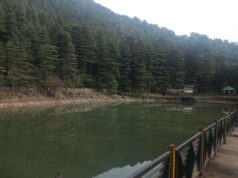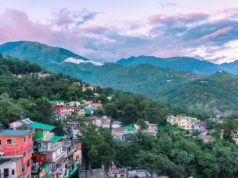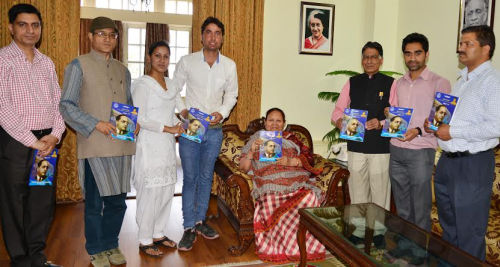Shimla – The Himachal Pradesh government has taken decisive steps to restore the rapidly depleting Dal Lake at Naddi, Dharamshala. Deputy Chief Whip Kewal Singh Pathania announced that geological experts and renowned conservationists will be invited to conduct a comprehensive study of the lake.
Dal Lake, known for its serene beauty and religious significance, has been drying up due to water seepage. Despite Rs. 31 lakh being spent on beautification efforts since 2004 by the Forest and Irrigation and Public Health (IPH) departments, the problem remains unresolved. The drying of the lake has negatively impacted aquatic life and local tourism, with the area now resembling a deserted landscape.
Pathania, during a meeting with officials from the Tourism and Forest Departments, emphasized the need for expert intervention. He stated that efforts would be made to reach out to conservationist Anand Malligavad, dubbed the “Lake Man of India,” who has successfully restored several lakes across Bengaluru. Malligavad, alongside other geological experts, is expected to lead the study aimed at identifying long-term solutions to the lake’s seepage issues.
Local activists, concerned about the declining aquatic life, have already relocated species to nearby water bodies. Pathania highlighted that the issue of Dal Lake’s drying is not just environmental but also economic, as it affects the livelihood of locals who rely on tourism. The lake is a popular destination for both domestic and international tourists, and its restoration is crucial to preserving the region’s economy.
Broader Implications for Himachal’s Lakes
The drying of Dal Lake is not an isolated incident. Khajjiar Lake in Chamba, another vital water body in Himachal Pradesh, faces similar challenges. Known as the “Mini Switzerland of India,” Khajjiar Lake is not only a tourist attraction but also holds religious importance for the locals. Situated at an altitude of 1951 meters, the lake is named after the local deity Khajji Nag, and it plays a key role in the spiritual and cultural lives of the residents.
Pathania mentioned that experts would also study Khajjiar Lake to find solutions to its water loss. Both lakes are integral to the state’s tourism and hold immense religious value, making their restoration a high priority for the government.
Future Plans and Expert Intervention
The government plans to submit a formal proposal to Chief Minister Sukhu in the coming weeks, seeking to engage experts who can address both the Dal Lake and Khajjiar Lake crises. The scientific studies will focus on identifying the causes of water loss, improving catchment areas, and revitalizing the aquatic ecosystem. Malligavad’s expertise in lake restoration offers hope for these water bodies, as his past projects have successfully rejuvenated several lakes suffering from similar issues.
The government’s efforts are seen as a positive step toward restoring the lakes, with a clear focus on sustainable, long-term solutions. The involvement of global experts signals the importance of these lakes not only to local communities but also to the state’s environmental and economic health.
Cultural and Economic Significance
Both Dal Lake and Khajjiar Lake are more than just scenic attractions; they are integral to the region’s cultural heritage. The lakes are frequently visited by both domestic and international tourists, and local residents hold religious ceremonies and worship at these water bodies. Their drying has disrupted not only the environment but also the socio-cultural fabric of the area.
The rejuvenation of these lakes is expected to boost tourism, restore aquatic life, and reinvigorate the local economy. Pathania expressed optimism that with expert guidance and sustained efforts, the lakes will once again become vibrant centers of natural beauty and cultural importance.
The Himachal Pradesh government’s initiative to call in conservationists and geological experts to save the iconic Dal and Khajjiar lakes represents a significant step toward environmental preservation. With strategic intervention and scientific research, the state aims to reverse the damage and restore these crucial water bodies to their former glory.







